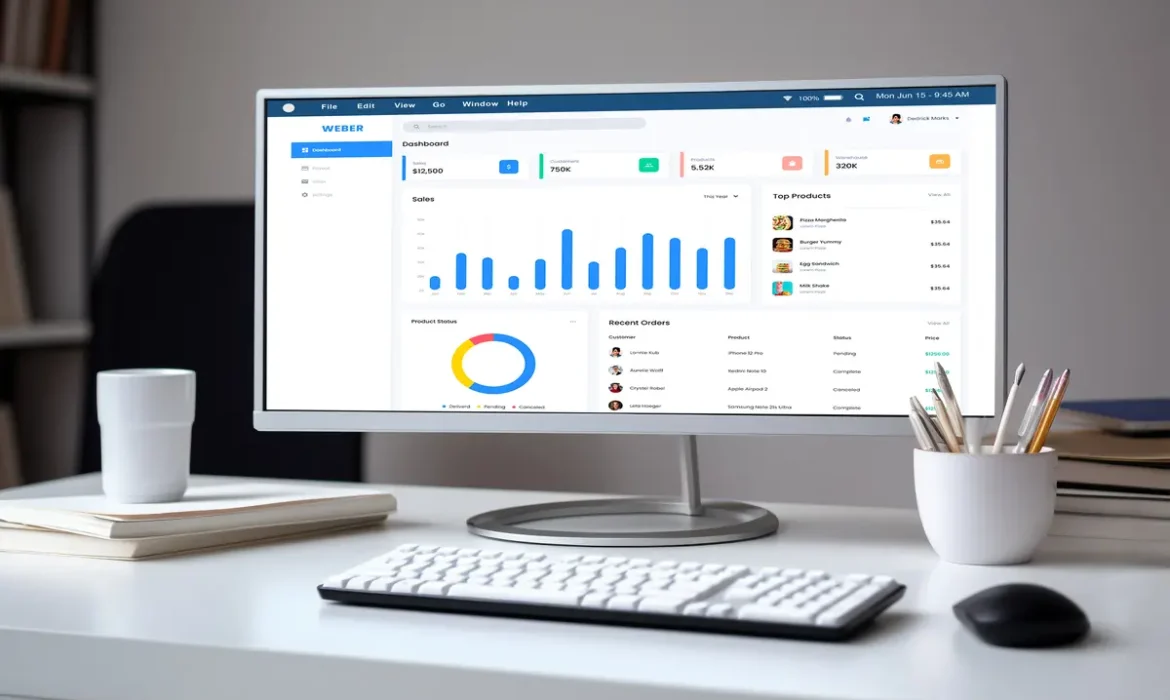Local Content Guide
Local Content Guide
Local content is an essential pillar of digital marketing, helping businesses establish trust, build community connections, and drive organic traffic from their immediate surroundings. In this guide, you’ll learn actionable steps and strategies to create high-quality local content that resonates with your audience, improves your local SEO, and drives meaningful engagement.

What Is Local Content?
Local content is any form of media, including articles, videos, images, or guides, specifically tailored to the needs, preferences, and interests of a particular geographic audience. This type of content aims to provide value by addressing topics relevant to a specific location, such as local events, business promotions, or community issues. For example:
- A restaurant might publish a blog titled “Top 5 Summer Events in [City Name] and What to Eat There.”
- A plumber might create a video on “How to Prevent Frozen Pipes During [City Name] Winters.”
Why It Works: Local content enables businesses to target users with high intent—those searching for products or services near them. By using tools like Google My Business and incorporating local keywords , you can ensure this content reaches your ideal audience.

Why Is Local Content Important for SEO?
Local content aligns perfectly with search engines’ growing focus on providing geographically relevant results. Here’s how it boosts your online presence:
Improved Search Visibility: When you optimize your content with local keywords, such as “plumbing services in [City Name],” search engines rank your website higher for location-based queries.
Enhanced Engagement: Content focused on local interests or problems tends to attract higher engagement rates, as it resonates with readers’ daily lives.
Increased Trust and Authority: Sharing your involvement in community initiatives or addressing local issues demonstrates your commitment to the area, building trust with your audience.
For instance, updating your Google My Business profile with local events, promotions, or FAQs can help capture the attention of nearby customers.
Strategies for Creating Effective Local Content
Conduct Thorough Local Keyword Research: Start by identifying keywords that reflect the local search intent of your audience. Use tools like Google Keyword Planner and Ahrefs to find terms like:
- “Best coffee shop in [City Name].”
- “24/7 emergency plumber in [Neighborhood Name].”
Integrate these keywords naturally into your content to ensure it aligns with search engine algorithms and maintains readability.
Write About Local Events and Stories: Publishing content that highlights local events, news, or trends is an excellent way to engage your audience. For example:
- A fitness studio could write, “How to Prepare for the Annual [City Name] Marathon.”
- A bookstore might post, “Upcoming Author Meet-and-Greet Events in [City Name].”
Such topics not only showcase your local expertise but also increase your chances of being shared on social platforms.
Optimize for Voice Search: With the rise of smart devices, voice search queries like “near me” or “open now” have increased. Include conversational phrases in your content, such as “best pizza places open now in [City Name],” to capture this traffic.
Create Dedicated Location Pages: If your business operates in multiple areas, create individual pages optimized for each location. These pages should include:
- Location-specific keywords.
- Unique content tailored to that area’s audience.
- Information on store hours, contact details, and customer testimonials.
Strengthening Local SEO through Social Media
Social media platforms are invaluable tools for enhancing local SEO efforts. By engaging with local audiences on platforms like Facebook, Instagram, and Twitter, businesses can improve their visibility in specific regions. Using location tags, relevant hashtags, and sharing locally-oriented content helps create a connection with nearby customers, promoting brand awareness within a specific geographic area. Additionally, when users engage with and share your content, it increases your presence in local search results, which can further boost your brand’s visibility. Social media profiles are also frequently indexed in search results, providing another online presence that reinforces your local SEO efforts. When you share content relevant to a local audience, it amplifies your chances of being found in local searches. For tips on optimizing your social media for local SEO, refer to our local SEO best practices guide.
Top Tools to Elevate Your Local Content Game
Here are some tools you can use to create, optimize, and monitor your local content:
- BuzzSumo : Find trending topics and content ideas specific to your region.
- Google My Business : Share posts, promotions, and updates with your local audience.
- Canva : Design eye-catching graphics for social media or blog posts tailored to local themes.
- Yoast SEO : Optimize your local blog posts and pages for search engines.

Common Challenges in Local Content Creation and How to Overcome Them
Generating Fresh Ideas: Writing about the same topics repeatedly can lead to content fatigue. Use tools like BuzzSumo or conduct surveys within your community to identify new areas of interest.
Limited Engagement: If your local content isn’t gaining traction, it may not be addressing the right audience. Revisit your keyword strategy and incorporate user-generated content, such as reviews or testimonials, to improve relatability.
Lack of Mobile Optimization: Most local searches happen on mobile devices. Ensure your website loads quickly, adapts to small screens, and offers clear navigation.
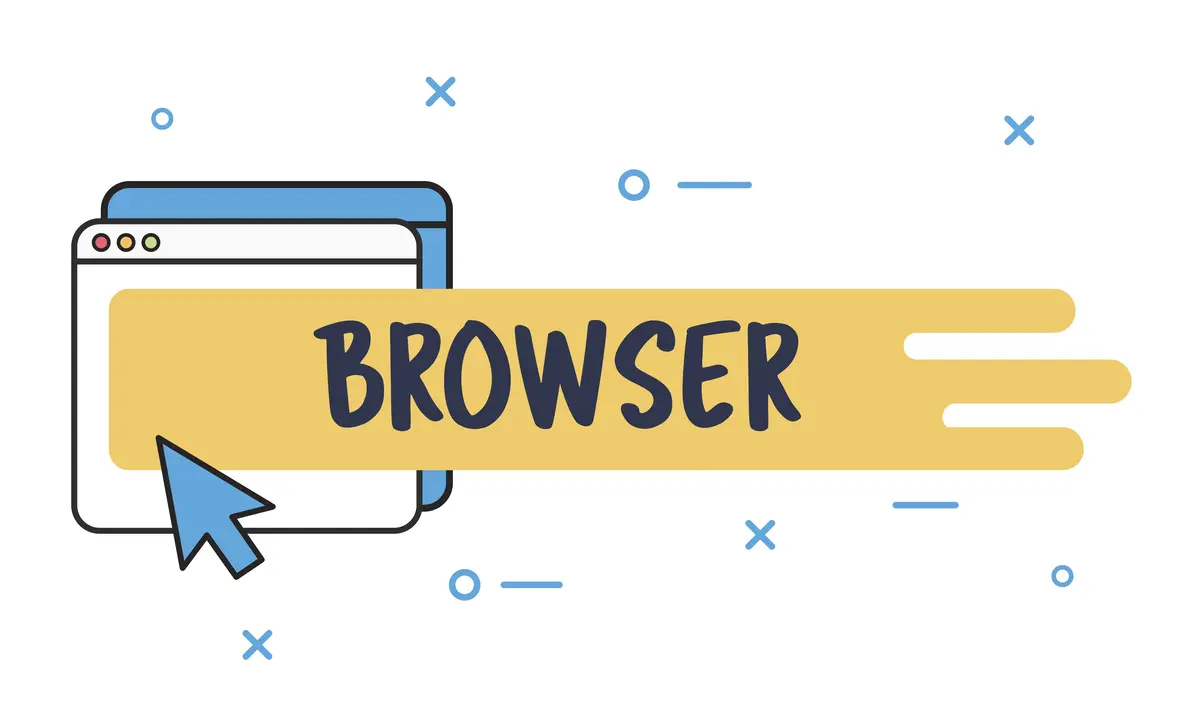
Case Study: Successful Local Content Marketing
Neighborhood Gym’s Blog Series
A neighborhood gym launched a blog series titled “Healthy Living in [City Name],” covering local farmers’ markets, fitness events, and workout routines suitable for the area’s climate.
Results:
- 200% increase in organic traffic within three months.
- Improved local search ranking for terms like “gyms in [City Name].”
- Enhanced engagement on social media platforms, with posts shared by local influencers.
Local content is a vital component of any digital marketing strategy. It allows businesses to connect with their communities, address local challenges, and attract high-intent customers. By implementing strategies like keyword optimization, event-focused content, and location pages, you can enhance your local SEO and establish a strong presence in your area.
Ready to elevate your local content strategy? Explore our Local Keywords Guide for expert tips or contact us for personalized assistance.
Contact Us
Drop Us a Line
Talk to Our SEO Experts – Start Your Success Journey!
Reputation Management
Reputation Management
In the digital age, a company’s reputation is one of its most valuable assets. Effective reputation management ensures that your business maintains a positive online presence, builds trust with customers, and stands out in a competitive marketplace. This guide explores the essentials of reputation management, strategies to monitor and enhance your brand image, and tools to safeguard your reputation in today’s digital landscape.

What Is Reputation Management?
Reputation management involves actively shaping the way your brand is perceived by your audience. It includes monitoring reviews, responding to feedback, and addressing negative publicity to maintain a positive public image.
For example, ensuring a strong presence on platforms like Google My Business can significantly enhance your credibility among local customers
Why Reputation Management Is Important
A good reputation translates to higher customer trust, improved loyalty, and increased sales. Studies show that 85% of consumers trust online reviews as much as personal recommendations, making it vital to manage your online reputation.
When businesses neglect their reputation, they risk losing credibility. Leveraging tools like Yelp, Google Reviews, and social media platforms helps companies stay proactive in addressing customer concerns.

Key Strategies for Effective Reputation Management
Monitor Online Mentions: Use tools like Google Alerts and Social Mention to track your brand mentions across the web. This allows you to respond quickly to any positive or negative feedback.
Encourage Positive Reviews: Actively encourage satisfied customers to leave reviews on platforms like Google Reviews or Yelp. Positive feedback boosts your online credibility and balances out occasional negative reviews.
Respond to Negative Feedback Professionally: Address complaints with empathy and provide solutions to improve customer satisfaction. For example, responding promptly to reviews on your local citation profiles demonstrates your commitment to customer care.
Build a Strong Social Media Presence: Maintain active profiles on platforms relevant to your audience. Use these channels to share updates, engage with followers, and address inquiries or concerns promptly.
Invest in Content Marketing: Publish valuable, engaging content like blog posts, case studies, and how-to guides to establish your brand as an authority in your niche. Aligning content with your local keywords strategy ensures better reach and relevance.
Tools for Reputation Management
Here are essential tools to streamline your reputation management efforts:
Google Alerts : Free tool to monitor online mentions of your brand.
Hootsuite : Helps manage social media interactions and monitor brand mentions.
Yext : Ensures accurate business listings across multiple platforms.
ReviewTrackers : Tracks and analyzes customer reviews to identify trends and improve services.
Reputation Repair: Addressing Negative Publicity
Even the best brands face occasional challenges. Here’s how to handle negative publicity:
Acknowledge and Address Issues: Whether it’s a critical review or a social media outcry, acknowledge the problem and communicate your steps to resolve it.
Engage a PR Strategy: When negative publicity affects your brand, collaborate with PR experts to rebuild your image and communicate your brand values effectively.
Strengthen Your Online Presence: Publish positive stories, customer testimonials, and educational content to shift focus from negativity.
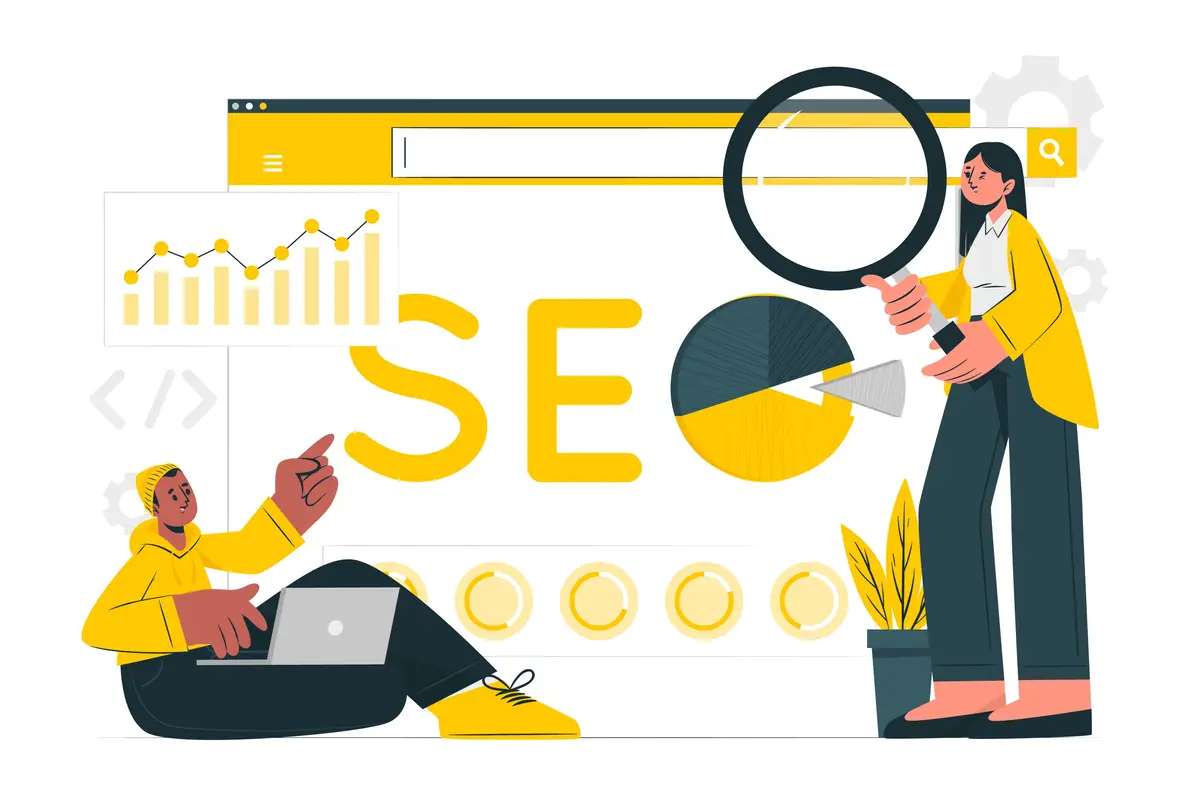
Reputation management is not a one-time effort but an ongoing process of building trust and credibility. By leveraging tools, monitoring feedback, and aligning with local strategies, businesses can protect and enhance their online presence.
Start managing your reputation today to ensure long-term success. For more tips, explore our local citation building guide or contact us for expert reputation management services.
Contact Us
Drop Us a Line
Talk to Our SEO Experts – Start Your Success Journey!
Audience Targeting Guide
Audience Targeting Guide
Understanding your audience is essential for any successful digital marketing strategy. In today’s competitive market, crafting a marketing plan that resonates with your audience demands precise targeting, data-backed insights, and effective execution. This guide walks you through everything you need to know about audience targeting, including strategies, tools, and best practices to help you dominate your local market.

What Is Audience Targeting?
Audience targeting is the process of identifying and segmenting your potential customers based on characteristics like demographics, behavior, interests, and location. By focusing on these segments, businesses can deliver personalized messages that resonate deeply with their audience, leading to better engagement and conversions.
For instance, leveraging tools like Google Analytics and Facebook Ads Manager can help you segment audiences based on location, age, and purchasing habits. This allows for hyper-focused campaigns tailored to your audience’s needs.

Why Is Audience Targeting Essential for Local Businesses?
For local businesses, audience targeting optimizes marketing efforts, reduces wasted ad spend, and creates meaningful connections with nearby customers. For example, if you’re running a Google My Business (GMB) optimization strategy , understanding your local audience ensures your listing appears for the most relevant searches.
Targeted marketing improves customer retention and loyalty by aligning your messaging with your audience’s values.
Steps to Build an Effective Audience Targeting Strategy
Identify Your Ideal Customer Profile (ICP): Define your ideal customers’ age, location, gender, income, and purchasing behavior. This creates detailed personas that represent your audience.
Analyze Competitor Strategies: Study competitors in your industry. For example, businesses using local keywords often rank higher and connect better with their audience.
Leverage Data Analytics: Use tools like Google Analytics to gather insights. Metrics like bounce rates, session duration, and user demographics can guide segmentation efforts.
Utilize Paid Ads Targeting: Platforms like Facebook and Google Ads allow you to target by location, behavior, and even device usage. For example, create a campaign aimed at smartphone users within a 10-mile radius.
Create Content That Resonates: Understanding your audience enables personalized content creation. Blogs, email campaigns, and social media posts aligned with audience needs foster engagement and build trust.
Top Tools for Audience Targeting
These tools can enhance your audience targeting efforts:
- Google Ads : Provides advanced targeting for refining audiences.
- HubSpot : CRM software for managing leads and tracking customer behavior.
- Ahrefs : Useful for discovering keywords and competitor strategies.
- Facebook Ads Manager : Customizes ad campaigns based on user interests.
By integrating these tools, you can ensure a more precise approach to reaching your ideal customers.
How to Use Local Keywords in Audience Targeting
Incorporating local keywords into your strategy boosts your search engine visibility for local queries. For example, using terms like “best digital agency in Dhaka” ensures your business appears for relevant local searches. Align your content with local citation building strategies to maximize effectiveness.
Challenges in Audience Targeting and How to Overcome Them
Limited Data Availability: A lack of data can hinder accurate audience definition. Overcome this by conducting surveys and using tools like Google Analytics for deeper insights.
Difficulty in Reaching Niche Audiences: Narrow audience segments can reduce reach. Balance precision and scalability for effective campaigns.
Ad Fatigue: Audiences may become desensitized to repetitive ads. Combat this by refreshing creatives and testing new messaging frequently.

Audience targeting is more than a marketing technique—it’s a strategic approach to understanding and engaging customers. Using data insights, leveraging tools like Google Ads , and implementing local keywords effectively can revolutionize your campaigns.
Start implementing these strategies today and experience the transformation targeted marketing can bring to your business. For more insights, check out our local keywords guide or contact us for expert guidance.
Contact Us
Drop Us a Line
Talk to Our SEO Experts – Start Your Success Journey!
Local Keywords Guide
Local Keywords Guide: The Ultimate Strategy for SEO Success.
A Local Keywords Guide is essential for any business aiming to dominate local search engine rankings. Local keywords ensure your business appears in front of the right audience in the right geographic location. By strategically implementing local SEO practices, businesses can drive foot traffic, boost online visibility, and increase conversions.
Incorporating local SEO strategy into your marketing plan helps you connect with potential customers in your vicinity. Unlike general keywords, local keywords focus on location-specific terms like “best cafes in Chicago” or “plumbers near me.” This targeted approach ensures that your business ranks high on search engines for relevant local searches.
Whether you’re a small café owner or a service provider, mastering the use of local keywords is crucial to your online success. Let’s dive into how to effectively identify, implement, and track local keywords to stay ahead of the competition.
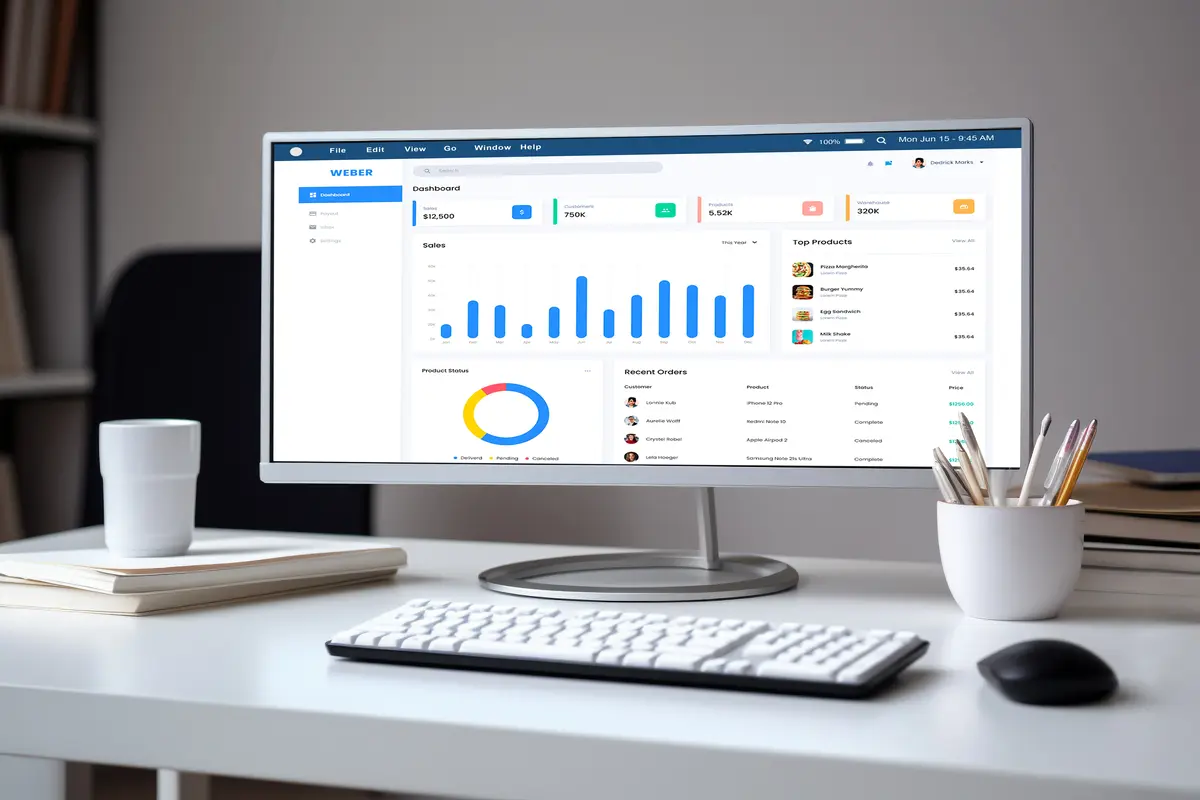
What Are Local Keywords?
Local keywords are search terms that include location-specific phrases to target audiences within a specific geographic area. These keywords often include the name of a city, town, or neighborhood, alongside a service or product. For instance, keywords like “dentist in Manhattan” or “pizza delivery near Downtown LA” help users find services close to their location.
To crafta strong Local Keywords Guide, it’s essential to understand user intent. Users searching for local services or products typically look for quick and convenient solutions. By integrating precise local keywords, you ensure your business ranks higher in search results for these queries.
External resources like Google’s Keyword Planner can help identify high-performing local keywords relevant to your niche. Combining these tools with insights from your local market ensures an optimized SEO strategy.

The Role of Local Keywords in Local SEO
Local keywords are the backbone of any effective local SEO strategy.They ensure your business gains visibility in local search results, especially on Google My Business and Google Maps. For instance, a query like “restaurants open late in Brooklyn” relies on the local SEO practices of the listed businesses to appear on the first page.
Local SEO optimizes your website and online listings with the right keywords, ensuring you attract customers searching for location-based services. By targeting phrases that include specific areas, you ensure higher engagement and more relevant website traffic.
Using tools like Ahrefs and SEMrush , you can identify the best-performing local keywords. Incorporate these into your web pages, headings, meta tags, and Google My Business profile to strengthen your visibility in local searches.
How to Research Local Keywords
Researching local keywords begins with understanding your target audience and their preferences. Start by brainstorming terms customers might use when searching for your services in your area. Tools like Google Trends and UberSuggest can offer insights into popular search terms in your region.
Another effective method is analyzing your competitors. Find out which keywords competitors rank for by using tools like Moz or Ahrefs . This helps refine your strategy and identify untapped opportunities.
For instance, if you own a flower shop in Miami, phrases like “flower delivery Miami” or “wedding florists near me” would likely yield high traffic. Optimize these keywords in your content and ensure they’re used naturally for better rankings.
On-Page Optimization with Local Keywords
Optimizing your website’s on-page content with local keywords is a vital part of any local SEO strategy Include these keywords in your titles, headings, meta descriptions, and body content for maximum impact.
For example, if your business is a bakery in San Francisco, your homepage title should read something like, “Best Artisan Bakery in San Francisco – Freshly Baked Goods Daily.” Similarly, include local keywords in image alt tags and URL structures.
Consistent optimization signals to search engines that your website is highly relevant to local searchers. Ensure the placement of keywords appears natural and doesn’t come across as “keyword stuffing,” which could harm your rankings.
Utilizing Google My Business and Local Keywords
Google My Business (GMB) is one of the most powerful tools for leveraging local keywords.Optimizing your GMB profile with accurate local keywords boosts your chances of appearing in the coveted “local 3-pack” on Google.
Include your primary and secondary keywords in your business description, services, and posts on GMB. For example, a car repair shop in Atlanta might use keywords like “affordable car repair Atlanta” or “auto service near Buckhead” to attract local clients.
Regularly updating your profile with offers, photos, and customer reviews also strengthens your local SEO. A well-optimized GMB profile ensures better rankings and higher click-through rates.

Utilizing Google My Business and Local Keywords
Content marketing plays a crucial role in promoting local keywords effectively. By creating blog posts, FAQs, and guides centered around location-specific topics, you can attract a more targeted audience. For example, a hotel in Orlando could create content like “Top 10 Attractions Near Downtown Orlando” to capture local interest.
Using internal links to connect related pages creates a cohesive structure that strengthens your site’s authority and keeps users engaged. External links to credible sources, like travel guides or local business directories further validate your content.
Tracking and Measuring Success with Local Keywords
Tracking the performance of your local keywords is essential to refining your strategy. Tools like Google Analytics and BrightLocal help measure metrics like organic traffic, bounce rates, and keyword rankings.
Monitor which pages perform best and identify areas for improvement. For instance, if a blog post on “pet grooming services in Los Angeles” receives high engagement, you can create more content around similar topics.
Consistent analysis ensures your local SEO strategy evolves with market trends, keeping you ahead of competitors.
Contact Us
Drop Us a Line
Talk to Our SEO Experts – Start Your Success Journey!
Review Management Local SEO
Review Management for Local SEO: The Ultimate Guide
In today’s digital landscape, review management plays a crucial role in boosting your business’s local SEO performance. Reviews not only enhance a business’s credibility but also significantly influence its search engine rankings. Google, for example, considers the volume, sentiment, and recency of reviews when ranking businesses in local search results.
Effective management of online reviews ensures that your business builds trust and stands out in the competitive local market. Platforms like Google My Business, Yelp, and Facebook are essential for capturing customer feedback and improving visibility.

What is Review Management in Local SEO?
Review management refers to the process of monitoring, generating, and responding to customer reviews to create a positive reputation for your business. Reviews directly impact how search engines perceive your business, especially for local searches. A well-maintained review profile can help your business appear in the coveted local 3-pack on Google.
Review management strategies include encouraging satisfied customers to leave positive reviews, addressing negative feedback promptly, and ensuring consistency across platforms. Leveraging tools like Google Business Profile and review monitoring platforms can streamline the process.

Why Reviews Matter for Local SEO
Customer reviews are vital for improving local search rankings and fostering trust among potential customers. Search engines prioritize businesses with high-quality reviews, making them more visible to users searching for relevant services.
Key benefits of reviews include:
- Enhanced credibility and trust.
- Improved click-through rates on search results.
- A stronger online reputation, which attracts more local customers.
Strategies for Generating Positive Reviews
Generating positive reviews requires a strategic approach:
- Provide excellent service: Happy customers are more likely to leave glowing reviews.
- Ask at the right time: Request reviews after a successful transaction or service.
- Make it easy: Offer direct links to review platforms like Google and Yelp.
- Engage your customers: Use email campaigns or SMS messages to encourage feedback.
By implementing these strategies, your business can create a steady stream of reviews that enhance its online reputation and local SEO performance.
The Importance of Responding to Reviews: Responding to reviews, whether positive or negative, is essential for building customer trust. Positive responses show appreciation, while addressing negative feedback demonstrates a commitment to improving customer experiences.
Best practices for responding to reviews:
- Acknowledge the customer’s feedback.
- Stay professional and polite, even in challenging situations.
- Offer solutions to negative experiences to show a willingness to improve.
A strong review response strategy helps foster long-term customer relationships and can even turn dissatisfied customers into loyal ones.
Monitoring Reviews Across Platforms
Keeping track of reviews across multiple platforms is vital for comprehensive review management. Tools like Google Alerts, BrightLocal, and Yext make it easier to stay updated on what customers are saying about your business.
Key platforms to monitor include:
- Google My Business: Essential for local SEO success.
- Yelp: Critical for industries like hospitality and retail.
- Social Media: Platforms like Facebook and Instagram are hubs for customer feedback.
Handling Negative Reviews Effectively
Negative reviews, if managed well, can be an opportunity to show your business’s professionalism and commitment to improvement. Ignoring or mishandling negative feedback, on the other hand, can harm your reputation.
Steps to handle negative reviews:
- Respond quickly to acknowledge the customer’s concern.
- Stay calm and professional, avoiding defensive language.
- Offer a solution or compensation when appropriate to resolve the issue.
Managing negative reviews effectively can turn a potential crisis into an opportunity for growth.

Tools for Review Management
Several tools can simplify and enhance the review management process:
- Google My Business Dashboard: For managing reviews directly on Google.
- BrightLocal: A comprehensive platform for review monitoring and local SEO.
- Podium: Helps automate review requests and responses.
- Trustpilot: Ideal for building trust and improving visibility.
By incorporating these tools into your strategy, you can stay ahead in managing your online reputation.
The Role of Customer Feedback in Business Growth: Customer feedback is more than just reviews; it provides actionable insights for improving products, services, and overall customer experience. Actively seeking feedback demonstrates your commitment to excellence and fosters loyalty.
Engaging with customers through surveys and follow-up emails not only generates valuable feedback but also encourages repeat business. Satisfied customers often become advocates, promoting your business through word-of-mouth and online reviews.
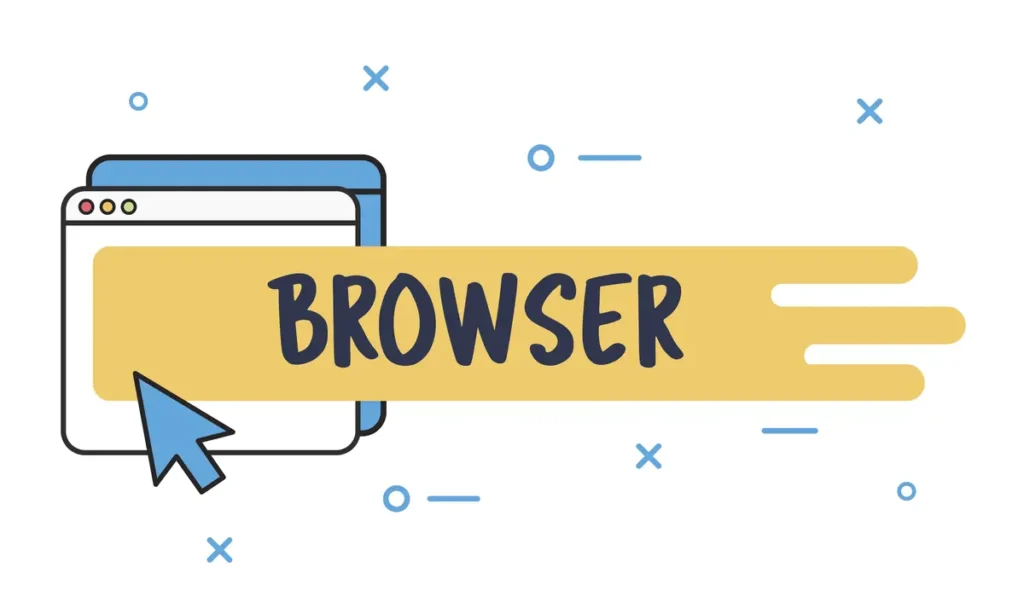
Building a Comprehensive Review Management Strategy: A successful review management strategy includes:
- Regularly monitoring and responding to reviews.
- Encouraging customers to leave reviews through various touchpoints.
- Using tools to streamline review tracking and response.
With a well-rounded strategy, your business can leverage reviews to improve its online reputation and local SEO performance.
Effective review management is a cornerstone of local SEO. By generating positive reviews, addressing customer concerns, and leveraging tools, businesses can build trust, improve visibility, and drive growth. Start implementing a review management strategy today to secure your place in the local market and stand out from the competition.
Contact Us
Drop Us a Line
Talk to Our SEO Experts – Start Your Success Journey!
Local Citation Building Guide
Local Citation Building Guide: Boost Your Local SEO
Local citation building is a cornerstone of any successful local SEO strategy. Citations help search engines verify the legitimacy of your business while enhancing its visibility in local search results. This comprehensive guide will walk you through everything you need to know about local citation building, including best practices, tools, and common mistakes to avoid. By following this guide, you can improve your local search rankings and attract more customers to your business.
What Are Local Citations?
Local citations refer to any online mention of your business’s Name, Address, and Phone number (NAP) on websites, directories, and social media platforms. These mentions play a critical role in Google’s local ranking algorithm.
There are two main types of citations:
- Structured Citations: These are found on business directories like Yelp or Google My Business .
- Unstructured Citations: These appear on blog posts, news articles, or social media platforms where your business details are mentioned casually.
Citations help establish your business’s legitimacy and authority in a specific geographic area. For instance, if a local restaurant has consistent NAP information across multiple directories, Google is more likely to rank it higher in local search results.
To learn more about the role of citations in SEO, check out Moz’s Local SEO Guide .

Why Are Local Citations Important?
Local citations contribute to local search ranking factors by signaling to search engines that your business exists and serves a particular geographic area. Here’s how they help:
- Increased Visibility: Listings on directories like Yelp, Bing, and TripAdvisor increase your chances of being found by potential customers.
- Credibility and Trust: Consistent NAP details across platforms establish your business’s authenticity.
- Improved Local SEO: Google uses citation data as a ranking factor for local search results, particularly for the Google Local Pack .
For example, if you’re running a digital agency like Inspiredesignspro , citations in marketing directories can significantly boost your visibility and credibility.

Types of Local Citation Sources
Identifying the right sources for local citations is essential. These can be categorized as:
- General Business Directories: Websites like Yellow Pages, Yelp, and Foursquare cater to businesses across all industries.
- Industry-Specific Directories: These are tailored to niche markets, such as legal directories for law firms or healthcare directories for medical practices.
- Geographic Directories: Local directories, such as city or regional websites, focus on businesses in a specific area.
- Social Media Platforms: Profiles on platforms like Facebook, LinkedIn, and Instagram also count as citations when they display accurate NAP information.
By listing your business on these platforms, you improve your local search presence. For example, having your digital agency listed on platforms like Clutch and DesignRush can drive targeted traffic.
Building Consistent NAP Across Platforms
Consistency is critical for local citation building. Google relies on accurate and uniform NAP details to verify the authenticity of your business. Inconsistent information can confuse search engines and lower your local rankings.
Tips for ensuring consistency:
- Use the same formatting for your business name, address, and phone number across all listings.
- Regularly audit your citations to identify and fix discrepancies.
- Update information promptly if your business moves or changes its contact details.
For instance, if a business’s name is listed as “Inspiredesignspro” on Google but appears as “Inspire Designs Pro” on Yelp, it could harm its rankings. Tools like Moz Local or BrightLocal can simplify citation audits.
For additional insights, visit Search Engine Journal’s guide on NAP consistency .
Tools for Managing Local Citations
Efficiently managing local citations is critical for maintaining consistency and tracking performance. Numerous tools can simplify this process, allowing businesses to focus on their core operations while optimizing their citation strategy.
Top tools for local citation management:
- Moz Local: This tool helps manage and audit citations while ensuring NAP consistency across platforms. Learn more at Moz Local .
- BrightLocal: Ideal for tracking citation performance, identifying errors, and discovering new opportunities.
- Yext: A comprehensive tool for managing and syncing business listings across multiple platforms.
These tools allow businesses to monitor their citations in real time, identify discrepancies, and even track the traffic generated from these listings.
For detailed guidance on managing local citations, internal links to Inspiredesignspro’s Content Creation Services can help businesses craft compelling and accurate descriptions for directory listings.

Common Mistakes in Local Citation Building
Avoiding mistakes in local citation building is essential for optimizing your local SEO efforts. Even minor errors can have significant impacts on your rankings and credibility.
Common mistakes to avoid:
- Inconsistent NAP Information: Variations in your business name, address, or phone number across platforms confuse search engines.
- Duplicate Listings: Having multiple listings on the same platform can dilute your authority and lead to penalties.
- Ignoring Niche Directories: Many businesses focus solely on general directories, neglecting industry-specific platforms that attract targeted audiences.
For example, a business listed as “Inspiredesignspro” on one platform but “Inspire Designs Pro” on another could lose credibility. Using tools like Moz Local or BrightLocal can help identify and rectify such errors.
To learn more about avoiding common SEO mistakes, check out Search Engine Journal .

Choosing the Right Citation Platforms
Selecting the right platforms for listing your business is essential for maximizing the impact of your citations. Not all directories are created equal, and prioritizing high-authority, relevant platforms can significantly enhance your local SEO.
Key considerations for platform selection:
- Relevance to Your Industry: If you run a digital marketing agency, platforms like Clutch or UpCity are ideal.
- Local Reach: Regional directories such as Yellow Pages or city-specific platforms help businesses connect with their local audience.
- Domain Authority (DA): Focus on directories with high DA, as these are more likely to impact your rankings positively.
For example, listing your business on Google My Business ensures you show up in the Google Local Pack, a prime position for local businesses.
Additionally, platforms like Bing Places and TripAdvisor are valuable for specific industries.
For businesses needing expert assistance in selecting citation platforms, internal links to Inspiredesignspro’s Local SEO Services can be useful.
Monitoring and Optimizing Your Citations
After building your citations, continuous monitoring and optimization are crucial to maintaining their effectiveness. Search engines value accurate and updated information, so proactive management is key.
Steps to monitor and optimize citations:
- Regular Audits: Use tools like Moz Local to audit your citations for inconsistencies.
- Track Performance: Analyze referral traffic and rankings to determine which directories drive the most value.
- Update Information Promptly: Ensure changes in address, phone number, or business name are reflected across all listings.
For businesses using multiple platforms, linking to a comprehensive service like Inspiredesignspro’s Digital Marketing Solutions can streamline citation management and optimization.
Measuring the Impact of Local Citations
To understand the effectiveness of your citation-building efforts, measuring the results is essential. This not only validates your strategy but also identifies areas for improvement.
Key metrics to track:
- Local Search Rankings: Use tools like Google Analytics or SEMrush to monitor your position in local search results.
- Traffic and Leads: Analyze referral traffic from citation sources to gauge their impact on lead generation.
- NAP Consistency Score: Platforms like BrightLocal provide insights into how consistent your NAP information is across directories.
Local citation building is an indispensable element of any robust local SEO strategy. By ensuring consistent NAP details, leveraging powerful tools, and optimizing your listings on relevant platforms, you can significantly enhance your local search rankings. Remember to avoid common mistakes and continuously monitor your citations for maximum impact.
Whether you’re starting from scratch or optimizing existing citations, professional support from Inspiredesignspro’s SEO Services ensures your business is well-positioned to thrive in the competitive local search landscape.
For further insights and resources, trusted guides like Moz and HubSpot are invaluable.

Contact Us
Drop Us a Line
Talk to Our SEO Experts – Start Your Success Journey!
Google My Business Optimization
Google My Business Optimization Guide
Optimizing your Google My Business (GMB) profile is essential for businesses aiming to enhance their local visibility and attract potential customers.
Google My Business is a free platform offered by Google that allows businesses to manage their online presence across Google Search and Maps. It’s a vital tool for improving local SEO, enabling businesses to appear in the “local pack,” the section of search results displaying nearby businesses related to a user’s query. A well-optimized GMB profile helps businesses provide accurate information to customers, including location, hours of operation, and services.
For example, a restaurant with a fully optimized GMB profile can attract more diners by showing up prominently when users search for “restaurants near me.” Moreover, features like Google Q&A, reviews, and photos create a rich user experience that fosters trust and encourages engagement.
Google My Business isn’t just for local businesses; even e-commerce companies with physical offices can use it to boost credibility. By utilizing GMB Insights, businesses can analyze how users interact with their profile, providing valuable data for continuous improvement.
For further guidance on optimizing local listings, explore Moz’s GMB Guide.

Setting Up Your GMB Profile
The foundation of GMB optimization is creating a complete and accurate profile. Start by claiming your GMB listing, which involves verifying your business ownership through a postcard, phone call, or email method. Once verified, ensure all essential information is filled in accurately. This includes your business name, address, phone number (NAP), website, and hours of operation.
Consistency is key—your NAP details must match those on your website and other online directories to avoid confusing search engines and customers. A common mistake is using abbreviations or alternative names across platforms, which can dilute your local SEO efforts.
Add a compelling business description, highlighting what sets you apart. For instance, a digital agency might emphasize its “results-driven SEO and creative web design services.” Select the most relevant primary and secondary categories for your business, such as “Marketing Agency” and “Web Designer” for digital marketing firms.
For a step-by-step guide on setting up your profile, visit Local SEO Guide.

Importance of Accurate NAP Information
NAP—Name, Address, and Phone Number—serves as the cornerstone of local SEO. Search engines rely on consistent NAP data to verify a business’s legitimacy. Any discrepancies in these details across platforms can harm your rankings and confuse potential customers.
For instance, if your business is listed as “ABC Digital Agency” on GMB but appears as “ABC Agency LLC” on other directories, search engines may view this as two separate entities. To prevent such issues, use a standardized format for your NAP across all platforms, including your website, social media profiles, and online directories.
Accurate NAP information ensures that users can contact or locate your business easily. Incorrect phone numbers or outdated addresses can lead to negative customer experiences, impacting your credibility. Additionally, updating your NAP details promptly when changes occur is vital to maintain trust and avoid losing potential leads.
Internal consistency is just as important. If you manage multiple locations, create individual GMB profiles for each with unique NAP details while maintaining consistent branding. For more tips on local SEO, check out our Local Keywords Guide.
Optimizing Business Descriptions
A well-crafted business description is a golden opportunity to showcase your brand’s unique value proposition. This section of your GMB profile should concisely explain what your business does, whom it serves, and why customers should choose you. For example, a description for a digital agency could read:
“Inspiredesignspro is a results-driven digital agency specializing in SEO, web design, and content creation, helping businesses worldwide achieve online success.”
Use targeted keywords naturally in your description to improve its relevance to search queries. Avoid stuffing keywords, as it can make your content sound unnatural and may violate Google’s guidelines.
Keep your description updated to reflect new services, promotions, or achievements. For example, if you recently expanded your offerings to include TikTok ads, mention this to capture interest from businesses seeking social media marketing.
Stay within the 750-character limit, focusing on the most critical details. For examples of effective descriptions, visit our Audience Targeting Guide.
Leveraging Google Reviews for Credibility
Google Reviews play a critical role in building trust and enhancing your local SEO performance. Positive reviews not only improve your business’s reputation but also signal to Google that your business is reliable and relevant to users’ queries. According to research, businesses with high review ratings and responses are more likely to attract clicks and visits.
Encourage satisfied customers to leave reviews by simplifying the process. Share a direct link to your Google review page on your website, social media, and email campaigns. For example, if you’re a digital agency like Inspiredesignspro, include a call-to-action in client communications: “We’d love your feedback! Share your experience with us here.“
Responding to reviews, both positive and negative, demonstrates your commitment to customer satisfaction. Thank users for positive reviews and professionally address any concerns raised in negative ones. This practice not only fosters customer loyalty but also improves the user-generated content associated with your business, which Google values.
Enhancing Your GMB Profile with Photos and Videos
Visual content significantly impacts how potential customers perceive your business. High-quality images and videos can attract more clicks, build trust, and encourage users to visit your business. Studies show that businesses with photos on their GMB profile receive 42% more requests for directions and 35% more website clicks compared to those without.
Add at least three types of photos:
- Interior and Exterior Photos: Show your business location to make it easy for customers to recognize.
- Product or Service Photos: Highlight your offerings to entice potential clients.
- Team Photos: Showcase your staff to add a human touch.
Videos, such as a quick office tour or client testimonials, can further enhance your profile. For instance, a short video explaining the process of building SEO strategies can be a great addition for agencies like Inspiredesignspro.
Update your gallery regularly to keep your profile engaging and current. Optimize file names and descriptions with keywords for better visibility.
For additional tips on video content, visit HubSpot’s guide to video marketing.

Utilizing GMB Posts for Engagement
Google My Business Posts are an effective way to share updates, promotions, and events directly on your profile. These posts appear in search results and on Google Maps, giving you additional opportunities to engage with potential customers.
Posts can include images, text, and call-to-action buttons like Learn More, Call Now, or Get Offer. Use them to promote seasonal deals, announce new services, or share valuable insights. For example, a digital marketing agency could create a post offering a free consultation for SEO audits with a link to their SEO Services.
Keep your posts concise and engaging, focusing on actionable language. Include relevant keywords to improve the likelihood of your post appearing in related searches. For instance, if you’re promoting a “Black Friday Web Design Deal,” use keywords like “affordable web design services.”
Ensure you update your posts regularly to keep your profile active. Expired or outdated posts can create a negative impression.
Tracking Performance with GMB Insights
Google My Business Insights is a powerful analytics tool that provides detailed data on how users interact with your profile. Tracking these metrics helps you refine your strategies and focus on what works best for your audience.
Key metrics include:
- Search Queries: Understand what keywords lead users to your profile.
- Customer Actions: Track how many users visited your website, requested directions, or called you.
- Photo and Video Views: Assess the engagement your visual content generates.
For example, if you notice a spike in calls after updating your business hours, it indicates that users value this information. Similarly, tracking keyword data helps you refine your local SEO strategy to focus on high-converting search terms.
Use this data to optimize your profile further. For example, if “affordable SEO services” brings traffic to your GMB profile, ensure your description and posts include similar phrases.
Common Mistakes to Avoid in GMB Management
Even the best efforts can be undermined by avoidable mistakes. Here are common pitfalls to steer clear of:
- Incomplete Profiles: Missing essential details like hours, NAP, or categories can harm credibility.
- Keyword Stuffing: Overloading your description or posts with keywords can lead to penalties.
- Ignoring Reviews: Failing to respond to reviews, especially negative ones, can deter potential customers.
- Outdated Information: Regularly updating your profile ensures accuracy and relevance.
For instance, a profile with outdated business hours can frustrate customers and lead to negative reviews. Similarly, ignoring customer reviews can give the impression that you don’t value feedback.
By avoiding these mistakes and following best practices, your GMB profile can consistently rank higher in local search results.

Google My Business optimization is a critical aspect of local SEO that can drive significant traffic and leads for your business. By focusing on accuracy, engagement, and regular updates, you can create a profile that not only ranks high but also resonates with your target audience. Use the insights and strategies outlined here to maximize your GMB profile’s potential.
Contact Us
Drop Us a Line
Talk to Our SEO Experts – Start Your Success Journey!
The Role of User Reviews in E-commerce SEO
The Role of User Reviews in E-commerce SEO
User reviews are essential to e-commerce SEO, contributing user-generated content that enhances page relevance, credibility, and customer engagement. Positive reviews can improve conversions, while ongoing reviews keep content fresh for search engines, which helps boost rankings. Beyond influencing search visibility, reviews build trust with new visitors by offering social proof and reassurance about product quality. In this guide, I’ll explore how reviews impact e-commerce SEO and provide practical tips to harness them effectively. For more on why reviews matter, check out our comprehensive SEO impact guide.

User Reviews as Fresh Content
A major benefit of user reviews is the continual influx of fresh content. Search engines prioritize updated pages, seeing them as more relevant to users’ needs. When customers leave reviews, they naturally use product-related language, including keywords that help boost page relevance. Prompting customers to leave reviews post-purchase is an effective way to keep this content fresh. Avoid filtering out constructive feedback; showing a balance of positive and negative reviews builds trust and reflects authenticity. Over time, these updates improve your e-commerce site’s ranking potential.

Enhanced Search Visibility with Rich Snippets
Displaying reviews in search results as rich snippets can improve click-through rates and visibility. When you apply structured data, or schema markup, to your reviews, elements like star ratings and review counts become visible directly in search results, making your listings more appealing. Using review schema on product pages can enhance visibility and draw more organic clicks from potential buyers. Once implemented, testing with Google’s Rich Results Tool can ensure everything is displaying correctly, maximizing this strategy’s effectiveness. For more on schema setup
Building Trust and Social Proof
Reviews serve as a form of social proof, helping potential customers trust your products. Displaying user reviews prominently reassures shoppers, which can increase both on-page engagement and conversion rates. Responding to reviews, both positive and constructive, shows that your brand values customer feedback. Video testimonials are another powerful way to build social proof, often resonating with audiences on an emotional level. A dedicated review section on each product page will maximize visibility, giving your audience easy access to firsthand customer insights.
Increasing Long-Tail Keyword Coverage
Customer reviews add a variety of keywords to product pages, many of which are long-tail keywords that naturally expand the page’s reach. Since customers use unique terms, their language can align with potential buyers’ search phrases, helping your page rank for a broader range of queries. By analyzing these keywords, you can adjust your content strategy to capitalize on commonly used terms, increasing search visibility. Tools like Ahrefs or SEMrush are useful for analyzing review content, which can inform targeted keyword optimization efforts. For keword optimization tips, visit our guide.
Boosting Engagement Metrics
Positive user engagement metrics, such as time on page and reduced bounce rate, are indicators of valuable content. Reviews help boost these metrics by encouraging customers to read through authentic feedback, which adds credibility to product information. Placing reviews strategically, like at the bottom of product pages, encourages users to scroll and view all available information. Review summaries also provide a quick snapshot that enhances user engagement. Monitoring user behavior through Google Analytics can help you see how reviews influence key metrics, helping refine page layouts.

Encouraging User-Generated Content
User-generated content in the form of reviews enriches product pages with authentic, varied perspectives. Allowing customers to include images in their reviews adds credibility and visual appeal. Featuring notable review quotes within product descriptions is another way to integrate user insights, creating a more relatable experience. Adding a “Top Reviews” section with standout reviews can further draw attention, showcasing both the most popular opinions and authentic feedback. Find more tips on using user-generated content in our UGC guide.
Improving Local SEO for Brick-and-Mortar Stores
For e-commerce businesses with physical locations, user reviews on platforms like Google Business Profile and Yelp help improve local SEO, increasing visibility for nearby customers. Encouraging satisfied customers to leave reviews on these sites can improve your local search ranking and attract foot traffic. Listings in local directories provide additional exposure and often appear prominently in search results. Engaging with reviews on these platforms boosts your business’s reputation, which can help build local trust. Read more in our local SEO guide.

Leveraging Reviews in Email Marketing
User reviews can be featured in email campaigns, strengthening product recommendations with social proof. Highlighting positive reviews in product-focused emails adds credibility, making recipients more likely to engage. A review request email campaign, sent shortly after purchase, helps maintain a steady stream of feedback. Offering incentives for reviews, such as a discount on the next purchase, can also encourage responses.
Monitoring and Analyzing Review Sentiment: Understanding the sentiment behind user reviews provides insights into customer satisfaction, helping identify areas for improvement. Sentiment analysis tools like MonkeyLearn can help gauge overall positivity or negativity in reviews, which informs product enhancements and business strategies. Patterns in negative feedback can reveal specific issues, helping you address and resolve them effectively. Leveraging positive sentiment in marketing, such as by highlighting commonly praised product features, is another strategic benefit.
Regularly Monitoring and Moderating Reviews
Monitoring and moderating reviews regularly keeps product pages trustworthy and relevant. Removing spam or irrelevant reviews protects your page’s credibility, while professionally responding to negative feedback can turn potentially unfavorable experiences into positive ones. Badges for verified purchases further reassure potential customers of review authenticity. Implementing a system for review moderation ensures your e-commerce site maintains a high standard of credibility and user trust. Check our review moderation guide for tips on handling reviews.
User reviews provide essential benefits to e-commerce SEO by adding fresh content, enhancing social proof, and expanding keyword coverage. Through structured data, diverse types of reviews, and sentiment analysis, you can maximize the SEO advantages of reviews. By monitoring feedback and engaging with customer insights, your brand builds a reputation of trust, helping improve both SEO rankings and overall customer satisfaction.
Contact Us
Drop Us a Line
Talk to Our SEO Experts – Start Your Success Journey!
SEO Tips for E-commerce Category Pages
SEO Tips for E-commerce Category Pages
E-commerce category pages are essential for both organizing products and optimizing your site’s SEO performance. These pages serve as the backbone of an online store, guiding customers through product categories and facilitating easy navigation. A well-optimized category page not only improves the user experience but also helps your site rank higher on search engines, making it visible to more potential customers. By using the right SEO strategies, you can increase organic traffic and conversions. This guide will walk you through the best practices to optimize your e-commerce category pages for SEO and enhance their performance.

Conduct Keyword Research for Each Category
Effective keyword research is the foundation of any successful e-commerce SEO strategy. For each category page, identifying primary and secondary keywords will ensure that your page ranks for terms users are actively searching. Start with broad keywords that describe the category, such as “women’s running shoes,” and then dive deeper into long-tail variations like “best lightweight women’s running shoes.” Tools like Google Keyword Planner, Ahrefs, or SEMrush can help you identify these terms. Additionally, be mindful of avoiding keyword cannibalization—ensure each category page is targeting unique keywords to prevent competing with other pages.
For a step-by-step guide on keyword research, check out our Keyword Research Guide. Targeting long-tail keywords can also help improve your rankings for more specific search queries.
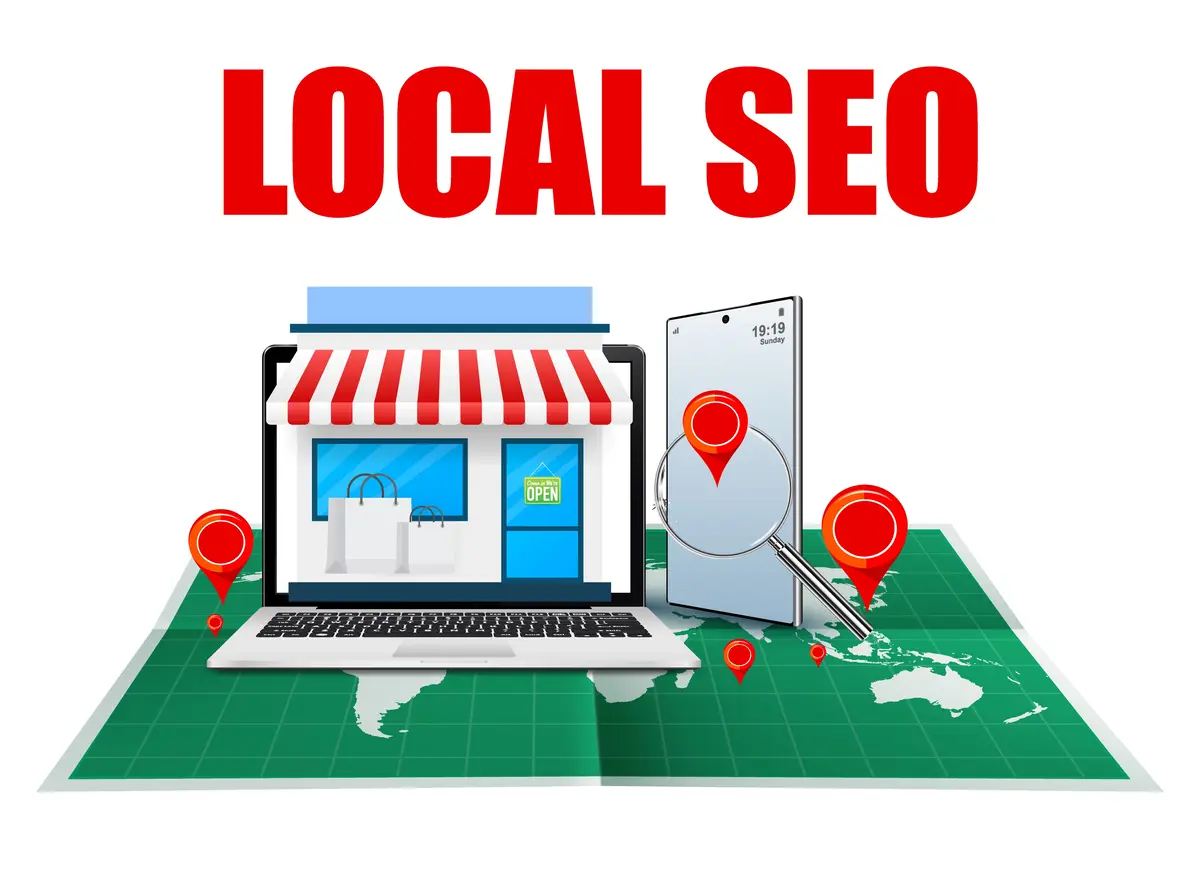
Write Unique and Engaging Category Descriptions
Category descriptions are vital for both SEO and the user experience. Writing unique, informative descriptions will not only help search engines understand what your page is about but also give potential customers a clearer picture of what to expect. Incorporate your primary and secondary keywords naturally in the text to enhance relevance without keyword stuffing, which can harm your rankings. Focus on user intent by addressing what the category contains, how the products are used, and any relevant styles or features. A clear, compelling call-to-action (CTA), such as “Shop Now” or “Discover Our Collection,” can also encourage customers to explore the products within the category.
To learn more about writing effective category descriptions, visit our Content Optimization Guide.
Optimize Title Tags and Meta Descriptions
Title tags and meta descriptions play a significant role in attracting clicks from search results. Title tags should include the main keyword for the category along with a compelling description of what the page offers. Keep it concise, ideally under 60 characters, to ensure it displays properly in search results. Meta descriptions, while not directly affecting SEO rankings, provide a preview of your category page and can improve click-through rates. Write unique meta descriptions for each category, summarizing the key features and including a CTA.
For additional tips on optimizing title tags and meta descriptions, refer to our Meta Tag Guide.
Implement Breadcrumb Navigation
Breadcrumb navigation improves user experience and helps search engines understand the structure of your site. By displaying the path from the homepage to the category, breadcrumbs give users an easy way to navigate back to higher-level pages. They also provide additional contextual clues to search engines about the page’s hierarchy. Make sure to use keyword-rich breadcrumb links without overstuffing them. Additionally, you can implement schema markup to display breadcrumbs in search results, which can increase click-through rates.
Use High-Quality, Optimized Images
Images are a crucial part of any e-commerce category page, providing a visual representation of the products. High-quality, relevant images attract customers, while optimizing them improves page load speed—critical for SEO and user retention. Ensure all images are properly named with descriptive, keyword-rich file names (e.g., “mens-leather-shoes.jpg”) and include alt text for accessibility and search engine optimization. Compress images to reduce file sizes, which improves site speed without sacrificing quality.
To learn more about image optimization, refer to our Image SEO Guide.

Use High-Quality, Optimized Images
Internal linking is an effective SEO strategy that helps distribute link equity and keeps users engaged on your site. From category pages, link to popular products or related categories to guide users to more relevant content. For example, link to “best-selling running shoes” or related categories like “trail running shoes.” Use descriptive anchor text that naturally incorporates target keywords. Not only does this improve SEO, but it also enhances the user journey by encouraging visitors to explore more options.
For more on internal linking strategies, refer to our Internal Linking Guide.
Use Structured Data for Enhanced Search Results
Structured data, also known as schema markup, provides search engines with more detailed information about the content of your page. Implementing product schema can highlight key product details such as price, ratings, and availability directly in search results, which can increase visibility and improve click-through rates. Additionally, breadcrumb schema enhances navigation in search results.
For guidance on implementing structured data, see our Schema Markup Guide.

Optimize for Mobile Users
With an increasing number of consumers shopping on mobile devices, it’s crucial to ensure that your category pages are mobile-friendly. Use responsive design techniques to make sure your page adjusts smoothly to different screen sizes. Mobile optimization also extends to page load speed; compressing images and minifying code can help reduce loading times, improving the user experience. Since mobile-friendly sites also rank better on Google, optimizing for mobile is essential for SEO.
Optimize URL Structure: A clean, descriptive URL structure helps both users and search engines understand the content of the page. Use short, clear URLs that incorporate the category’s primary keyword (e.g., “yoursite.com/mens-running-shoes”). Avoid using special characters or unnecessary parameters, which can make the URL appear cluttered and reduce its SEO effectiveness. Keep the structure consistent across all category pages to maintain a well-organized site.
Regularly Update Category Pages with New Content
Search engines favor fresh, updated content, and category pages are no exception. Regularly update these pages with new products, seasonal offers, or promotions to keep them relevant. For example, add a “New Arrivals” section or highlight limited-time discounts. Updating content signals to search engines that your page is active and engaging, helping improve its rankings.
For more on content freshness, check out our Content Update Guide.
Optimizing your e-commerce category pages is vital for improving search engine visibility and enhancing the user experience. By following the best practices outlined above, including effective keyword research, high-quality images, internal linking, and structured data implementation, you can drive more organic traffic to your site. Regularly updating content and optimizing for mobile will ensure long-term success in capturing potential customers. For continuous improvements, track your performance and adjust strategies as needed to keep your category pages SEO-friendly and conversion-driven.
Contact Us
Drop Us a Line
Talk to Our SEO Experts – Start Your Success Journey!
E-commerce SEO Tactics for Higher Conversions
Effective E-commerce SEO Tactics for Higher Conversions and Increased Organic Traffic
SEO is crucial in e-commerce for attracting organic traffic and achieving higher conversions. When optimized effectively, e-commerce sites can rank well on search engines, bringing in relevant visitors who are more likely to convert. Here’s a comprehensive guide on actionable e-commerce SEO tactics to help boost visibility, drive quality traffic, and improve conversions.

Conduct Thorough Keyword Research for Product and Category Pages
Identify High-Intent Transactional Keywords: Keywords that indicate purchase intent, such as “buy,” “discount,” and “best price,” can attract potential customers actively looking to make a purchase. To improve the effectiveness of these keywords, target variations that capture user intent, like “cheap,” “quality,” or “top-rated.” To learn more about finding and selecting these keywords, explore our E-commerce Keyword Research Guide.
Use Long-Tail Keywords for Specific Targeting: Long-tail keywords are often more precise and relevant, like “lightweight women’s running shoes for trail running.” These keywords typically have less competition and target niche audiences, making them highly valuable on product and category pages. Including descriptive long-tail keywords not only improves visibility but also attracts users with higher conversion intent.

Optimize Product Pages for SEO and Conversions
Write Unique Product Descriptions to Avoid Duplicate Content: Avoid using manufacturer-provided descriptions, as they are often duplicated across multiple sites and don’t cater to specific SEO goals. Instead, craft original, engaging descriptions that highlight unique product benefits, uses, and features. For instance, instead of “high-quality running shoes,” try “high-quality, lightweight running shoes designed for enhanced comfort on trail runs.” This approach not only appeals to potential customers but also increases SEO relevance.
Include Rich Media for Enhanced User Engagement: Rich media like high-quality images, videos, and 360-degree views allow customers to fully experience the product. Optimizing each media element with descriptive alt text, captions, and structured data improves SEO and boosts accessibility. For example, an alt text like “black leather handbag with gold zipper and spacious compartments” provides search engines with more relevant context.
Improve Site Architecture for User-Friendly Navigation
Use a Simple Hierarchical Structure for Clarity: Structuring your site into clear, logical categories and subcategories helps customers quickly find what they’re looking for and makes it easier for search engines to crawl. Organize product categories by type, brand, or customer needs. For instance, under “Women’s Footwear,” you might have subcategories like “Running Shoes,” “Sandals,” and “Boots.” This structure is beneficial for both users and search engines; see our E-commerce Site Architecture Guide for more insights.
Implement Breadcrumbs for Better Navigation and SEO: Breadcrumbs provide a trail showing users their path on the site, which enhances navigation and helps with internal linking. Additionally, breadcrumbs improve SEO by helping search engines understand your site’s structure and hierarchy, which can positively impact rankings.
Optimize Category Pages for SEO
Add Keyword-Rich Descriptions to Category Pages: Including a brief description with relevant keywords at the top of each category page can improve SEO. This text helps search engines grasp the page content while giving users quick insights into the product category. For example, on a “Running Shoes” category page, consider adding a description like, “Explore our collection of lightweight, durable running shoes for all terrains and weather conditions.”
Link to Relevant Product Pages with Descriptive Anchor Text: Linking to specific products from category pages with descriptive anchor text, such as “women’s waterproof trail running shoes,” improves SEO and enhances navigation. For more tips on optimizing category pages, check out our Category Page Optimization Guide.
Leverage User-Generated Content for SEO and Credibility
Encourage Customer Reviews for Social Proof and SEO: Customer reviews build trust and credibility for your products, which can improve click-through rates. Positive reviews that naturally incorporate product keywords also enhance SEO by providing search engines with additional relevant content. To boost reviews, consider adding incentives like discounts or loyalty points. Find more ideas in our User-Generated Content Guide.
Add a Q&A Section to Address Customer Queries: Including a Q&A section allows customers to ask questions and receive responses directly on product pages. This feature not only engages users but also adds valuable, keyword-rich content that search engines recognize. For example, questions like “Are these shoes suitable for winter running?” include relevant keywords while helping potential buyers make informed decisions.

Optimize for Mobile Users to Capture Growing Mobile Traffic
Implement Responsive Design for Mobile Compatibility: With the increasing number of mobile shoppers, it’s essential to use responsive design that adapts seamlessly across devices. This ensures a consistent user experience and improves mobile rankings. To achieve a fully responsive site, optimize images, fonts, and layouts. Learn more in our Mobile Optimization Guide.
Streamline the Mobile Checkout Process: A mobile-friendly checkout process reduces cart abandonment. Simplify the steps, minimize data entry, and add secure payment options to improve conversion rates. Remove any unnecessary steps, and enable guest checkout to facilitate faster transactions for new customers.
Use Structured Data Markup to Improve Search Visibility
Apply Product Schema for Enhanced Search Listings: Structured data like product schema can enhance search results by displaying product information, such as pricing, availability, and ratings, directly on the search results page. Implementing structured data improves your visibility in search results and can attract higher click-through rates.
Enhance Page Load Speed for Better User Experience and SEO
Compress Images and Enable Lazy Loading: Slow-loading sites negatively impact user experience and SEO. Compressing images and implementing lazy loading—where images load only as users scroll—can reduce load times, particularly on mobile devices. For a full list of optimization techniques, explore our Page Load Speed Guide.
Utilize Browser Caching and Minify Resources: Browser caching reduces load time for returning users by storing static files. Minifying CSS, JavaScript, and HTML files removes unnecessary code, which improves loading speeds for all users, enhancing both SEO and user satisfaction.
Contact Us
Drop Us a Line
Talk to Our SEO Experts – Start Your Success Journey!







